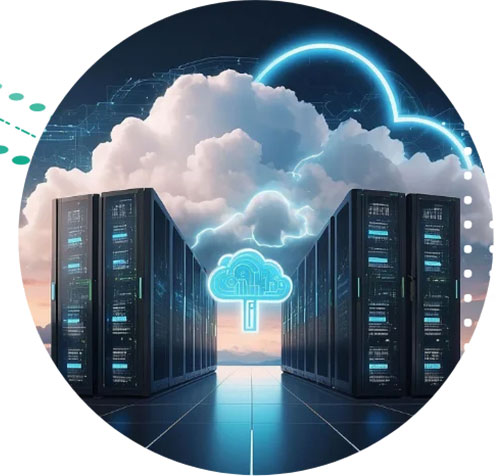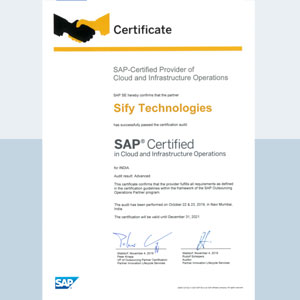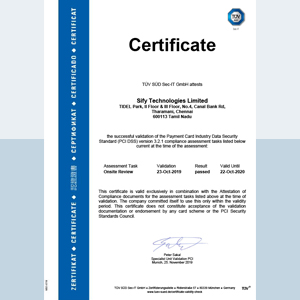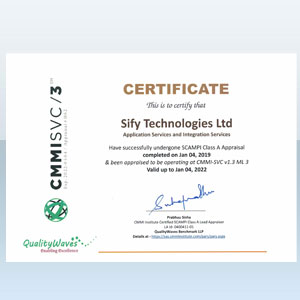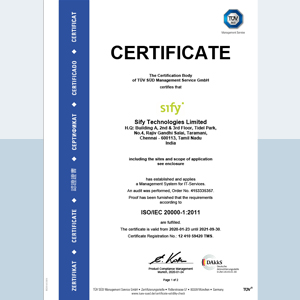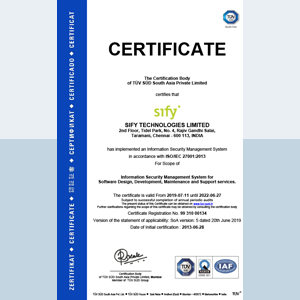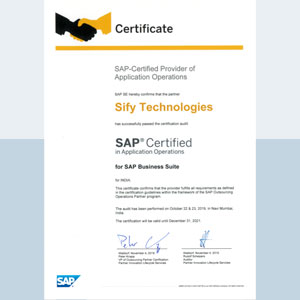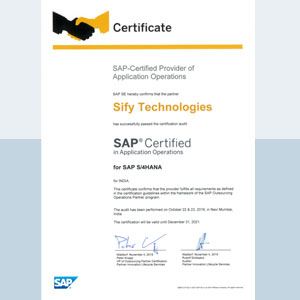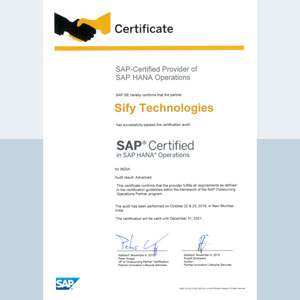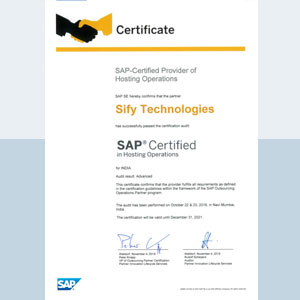AI-Ready Infrastructure: How AI Data Centers Are Evolving to Power AI Workloads
Data Centers Are Undergoing a Fundamental Shift. As digital transformation accelerates across industries, the role of the data center is evolving from a static infrastructure component to a dynamic enabler of business agility and on-demand software driven infrastructure.
What Are Cloud Services? Benefits, Types, and Use Cases
In a world where digital transformation is the key to business success, cloud services have become a pillar for contemporary organisations.
What is cloud migration? | Benefits, Types, Strategy & Process
In today’s complex business operations, the need for flexible, scalable, and cost-effective IT infrastructure has become crucial for their success.
End-to-End Observability with SD-WAN: Transforming Network Insights into Business Value
In a world of distributed workforces and cloud-first strategies, enterprises require seamless connectivity, security, and real-time insights. SD-WAN observability transforms network performance management from a reactive approach to a proactive, AI-driven strategy — enabling businesses to stay ahead in an increasingly complex digital ecosystem.
Edge & hyperscale data centres driving India’s digital growth
As of February 2025, India has 153 data centres, with operational capacity expected to rise to 2027 MW by the end of 2025.
Scaling for Tomorrow: The Future of Hyperscale Data Centers in an AI-Centric World
It’s 2025, and AI has joined the workforce—a bold shift that is reshaping businesses and industries while driving an urgent need for better computational infrastructure. Hyperscale data centers are at the core of this transformation, offering the power, cooling, and networking capabilities required to sustain AI’s exponential growth.
Technology Advancements Driving AI-Ready Hyperscale Data Centers
Data centers initially focused on mainframe computing and in-house IT, relying on centralized CPU-based architecture for structured workloads.
How Sify Technologies is driving sustainable data center growth
As digital transformation accelerates, the demand for data storage and processing is surging, placing immense pressure on data center infrastructure.
Building sustainable data centers for high-density AI workloads
The rapid advancement of AI has amplified the need for data centres to be both powerful and sustainable. AI workloads demand immense computational resources, significantly increasing power consumption.
Reimagining GCC Enablement in India: A Pragmatic Playbook
The Need, the Purpose, and Opportunity
Global Capability Centres (GCCs) have evolved far beyond their original mandate of providing cost arbitrage through back-office support. Today, they are engines of innovation, customer experience, and digital scale. As enterprises re-architect themselves for agility, resilience, and speed, GCCs are being repositioned to drive strategic value. India remains at the centre of this movement, thanks to our deep and diverse talent pool, maturing tech ecosystem, and growing relevance in the global digital value chain.
The opportunity is compelling; but realizing it demands a purpose-fit foundation is important. GCCs require much more than skilled professionals. They need a robust, secure, and scalable infrastructure spine that can integrate with global operations, comply with stringent regulatory standards, and evolve with technological shifts like GenAI, cloud-native development, and zero-trust security.
The Ingredients and Challenges
The key ingredients for a successful GCC in India are straightforward: reliable digital infrastructure, high-speed connectivity, regulatory compliance, operational agility, and sustainability. However, turning this vision into reality brings its own set of challenges.
India, while rich in human capital, still presents hurdles in ease of doing business, particularly when it comes to infrastructure development, coordination across state agencies, and regulatory transparency.Availability of high-quality commercial and data infrastructure in emerging GCC hubs outside Tier 1 cities remains uneven. Power reliability, latency bottlenecks, and delayed approvals can impact project timelines.
Moreover, as GCCs move into value-creation and innovation zones (e.g., AI/ML centers, R&D hubs, and data governance units), the demands on security, uptime, and seamless integration with global systems increase significantly. These are not “build once, forget” environments, they require living, breathing infrastructure that adapts in real-time to their often urgent & changing needs.
The Friction Points Sify can help Overcome
Sify focuses on addressing the hard problems—the friction points that can delay or derail GCC ambitions. Specifically:
- Digital Infrastructure Readiness: We offer AI-ready data centers in strategic metros like Bengaluru, Mumbai, Chennai, Noida, and Hyderabad, with quick deployment timelines. A case in point: our Bengaluru hyperscale facility is going live within a year of project sign-off, including site acquisition, build, and commissioning.
- Seamless Global Connectivity: Our express domestic backbone connects directly into global submarine landing stations, enabling low-latency connectivity to major global data centers and cloud regions. This is especially critical for real-time workloads, global collaboration, and regulated industries like BFSI and healthcare.
- Integrated Network + Cloud + Security: Sify’s “One Pipe, Multiple Services” approach ensures enterprises can access MPLS, VPN, cloud, and internet services over a single high-performance network link, with built-in redundancy and differentiated SLAs.This eliminates the complexity of managing multiple service providers.
- Operational Agility and Customization: Our modular architecture enables faster buildouts, capacity upgrades, and solution tailoring—giving GCCs the ability to scale with precision and control.
The Global Initiatives we help Accelerate
We align with the Indian GCC’s global priorities, not just operationally, but strategically. Two stand out:
- Sustainability and ESG Mandates: As global boards prioritize carbon-neutral operations, we bring a credible green roadmap. With 231 MW of contracted renewable power and RE100 alignment, Sify offers a sustainable infrastructure foundation. Our green data centers reduce Scope 2 emissions, enhance ESG ratings, and contribute directly to GCCs’ environmental goals.
- Workforce Hybridization and Distributed Delivery: With the shift to hybrid and distributed teams, GCCs need network resilience and secure remote access models. Sify supports this via SD-WAN, cloud-native collaboration platforms, and edge-to-core visibility—ensuring teams perform consistently, regardless of location.
Why Sify is Different and Better
While infrastructure players in India are many, Sify is built differently.
- Footprint Aligned to GCC Presence: We have hyperscale data centers in cities where global GCCs are already active or expanding. This proximity translates to lower latency, faster deployment, and easier governance.
- Network Strength: Our carrier-neutral network is one of the most extensive in the country, with direct international exits and regional redundancy. This means faster, more reliable performance across enterprise and cloud workloads.
- Proven Agility: Speed is our differentiator. From land acquisition to DC go-live in under 12 months, our execution capabilities have been tested and proven. We build and scale faster—because we’ve internalized the full value chain.
- Integration with Global Cloud Ecosystems: Our direct connects with AWS, Azure, Google Cloud, and Oracle Cloud allow GCCs to deploy hybrid and multi-cloud strategies with ease. We also enable cross-cloud traffic management, cost optimization, and security posture management.
- Security by Design: From K8-rated perimeter controls to AI-led surveillance and layered cyberdefenses, our infrastructure is built for compliance with global standards including PCI-DSS, HIPAA, ISO 27001, and SOC 2.
- Client Trust: We are already the infrastructure partner to 30+ operational GCCs, every major public cloud, and leading banks and SaaS innovators. Our track record speaks for itself.
The Ask from You: Let’s Engage to Accelerate
We believe the next wave of GCC evolution will be defined not just by who builds fastest, but by who builds with foresight. Being resilient, adaptive, and future-ready.
Sify is uniquely positioned to be the infrastructure ally to forward-looking GCCs. We bring the depth of capability, speed of execution, and strategic alignment to global enterprise goals.
We now invite GCC leaders to engage with us. Whether you’re setting up your first center or scaling to the next 5000 employees, let’s co-create a digital infrastructure roadmap tailored to your growth story. From ideation to deployment, our teams are ready to partner, assess, and deliver.
Let’s get started. On your terms, at your pace, and in sync with your global ambition.



















